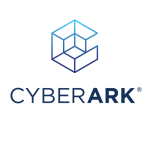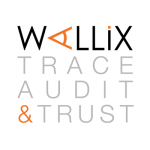I use Password Safe as a fully-fledged conventional PAM solution; for SSH and RDP brokering to servers, whether that's Linux or Windows, as well as SQL and Oracle.
I also use the product to publish applications using a jump box server and as a vault for user credentials to provide normal use and REST API through CI/CD integration.
We have active and passive appliances and an offsite cold spare.
The RDP and SSH session recording is good. The associated UI is pretty straightforward, and Direct Connect is a good feature.
Integration with Active Directory is a handy feature.
The CI/CD and REST API are also satisfactory; the solution has a full PAM feature set and they all work well.
Password Safe is relatively straightforward to run.
We use PowerShell and Shell scripting using the solution's libraries. We also use the .NET library, where I worked with developers to create .NET extensions for use in solutions built in-house. We used the product's software development kit to develop plugins to some extent, and mainly we integrated with the REST API for our Azure-developed CI/CD pipeline. This capability is essential because DevSecOps becomes a requirement at some point. We're dealing with privileged accounts to do releases, which must be carefully managed and require password rotation. Thus, we need a source system for these release management pipelines to provide passwords, allowing the user to continue with the following deployment steps. Highly privileged accounts, by their nature, require regular password changes, which is a critical element in our DevOps.
I'm not too fond of the Smart Rules feature, mainly because too many features can cause complexity.
There is a limited capacity on the appliance, which I wasn't informed about when I purchased the product. I can have a maximum of 150 rules per appliance; any more than that and rule processing becomes very complex, especially regarding password revision. Hitting a capacity limit you don't know about can be problematic. Ideally, we would not have a limited capacity, allowing us to be in a completely managed state with password rotation for every service account, not just the highly privileged ones.
The solution does not indicate an issue, but when we hit the capacity limit, rules can become erratic, resulting in password resets during the middle of the day when they're in use. This can be an issue, especially as there is no performance counter so we can track how close we are to the limit, nor is there an indication of when we cross it. This is an element that could use a redesign.
Another feature that could be improved is the password rotation schedule; as a financial organization, that's very important to us. We sometimes require the maintenance window to be on a Saturday instead of during the week. The solution gives the option for the fifth day of the month, the tenth day of the month, the first day of the week etc., but not more specific. I want to be able to set the rule that password changes only happen on a Saturday, for example, and I can't do that.
To compensate, BeyondTrust tells us we can write scripts to set the password resets. This needs to be improved because it results in additional work for us, and they could fix the small scheduling gap in their product.
The MSA element of the solution is fine; there are no significant issues implementing MSA with the interface. However, the interface can be somewhat complicated for admins, though not for end users. Precisely, when troubleshooting user issues, we encountered strange errors. We needed to go into the appliance log to understand what was happening, and the UI needed to be more intuitive to help us.
We were late refreshing the UI, so it had pretty old components until about 2020, and we experienced browser issues. After 2020, the UI improved, but the look and feel of the application are still dated. I carried out POCs for CyberArk and SafeGuard, and both of their interfaces are much better than Password Safe's. I liken the solution to a Toyota; it's a good all-rounder, and it isn't bad though it has some issues.
We had an issue with the Team Passwords feature: the privilege concept needed to be improved. There was no differentiation between contributors of privileged information and the consumers of it. Additionally, until very recently, there was no REST API integration with Team Passwords, so we couldn't publish secrets using REST API. This could have been better, as it meant we needed a different team for CI/CD and Team Passwords, resulting in some cases of duplication.
I've been using the solution for five years.
The solution is relatively stable, though the stability could be improved as we often encounter issues of various kinds. As such, the tool requires a large team to manage it and stay on top of any problems that occur.
My experience with customer support has been mixed; the US and UK teams are the best, while the others could have been better. The UK and UK support staff are highly professional people who seem very close to the developers and have excellent knowledge of their products.
Some of our cases took up to four months to resolve because there is a difference between Password Safe, the software layer, and the UVM appliance layer, which BeyondTrust essentially treats as a separate product. There have been some significant problems with the UVM appliance layer, especially compared to Password Safe. The latter has some specific issues, but they are usually quick to resolve, whereas, with UVM, we can hit a dead end, even with support.
ROI is tough to measure, as the solution isn't generating profit. We implemented automation with CI/CD, reducing human effort and saving time on previously manual tasks. I can't tell if this has yielded an ROI, but we achieved a target in that we are more secure, our highly privileged accounts are rotated etc.
I rate the solution a six out of ten.
The earliest version of the solution's interface could have been more intuitive, and we sometimes experienced issues with request check-ins and check-outs. However, the recent introduction of the Team Password feature allows users to collaborate and share passwords within a managed team. Some elements of this feature lagged in our first few weeks with it.
We used some of the solution's customization features, and it works fine; however, we had some significant issues when doing Discovery Scans. We encountered strange errors, especially on custom platforms, and it took a lot of work to understand the problems. As a result, we stepped away from customization as the issues around Discovery became extremely hard to deal with for us.
We saw the benefits of using the solution very quickly, especially for the more basic elements at the beginning of the implementation. By targeting highly privileged accounts in the first round through the Active Directory, those can be up and running in two weeks maximum. The more complex and detailed configuration becomes, whether with discovery, dependency, or multiple-layer applications, the time to value increases correspondingly.
I advise potential users to stay manageable and not try to do everything simultaneously. Build slowly and keep an eye on the capacity; only deploy with one appliance, or you are destined to fail and will run out of capacity fast. It's better to refresh the UVM appliance version every two to three years with a new image and migrate rather than upgrade because upgrading is the worst part of this product. It'll cost money to keep migrating to newer appliances, but it's worth it to avoid the experience of upgrading.



















